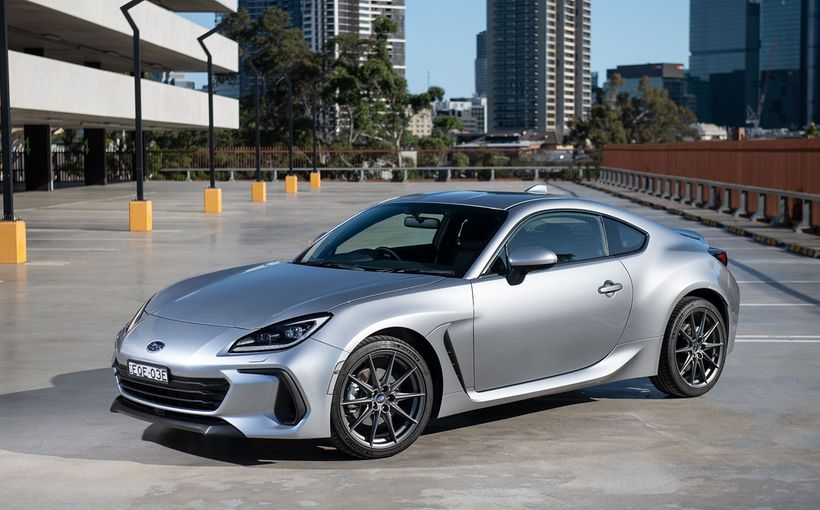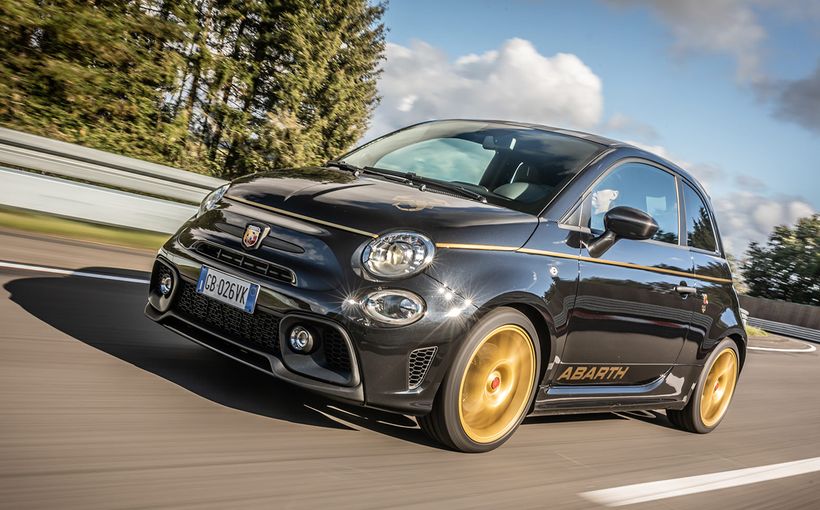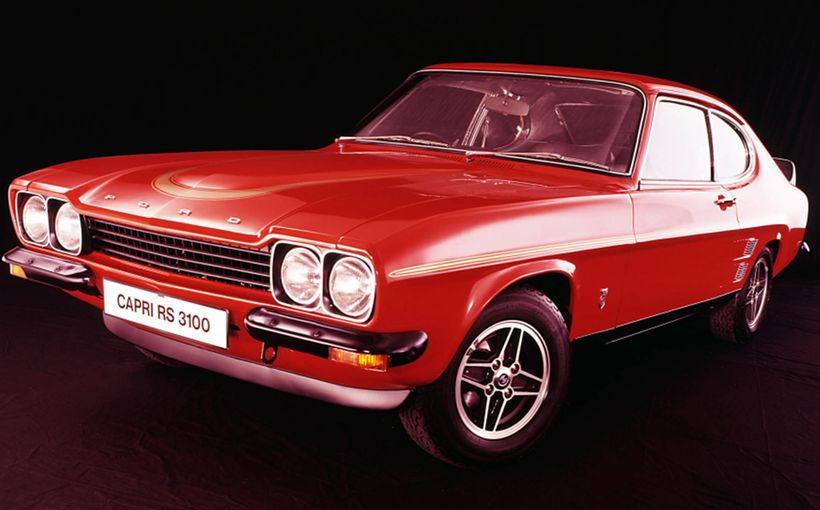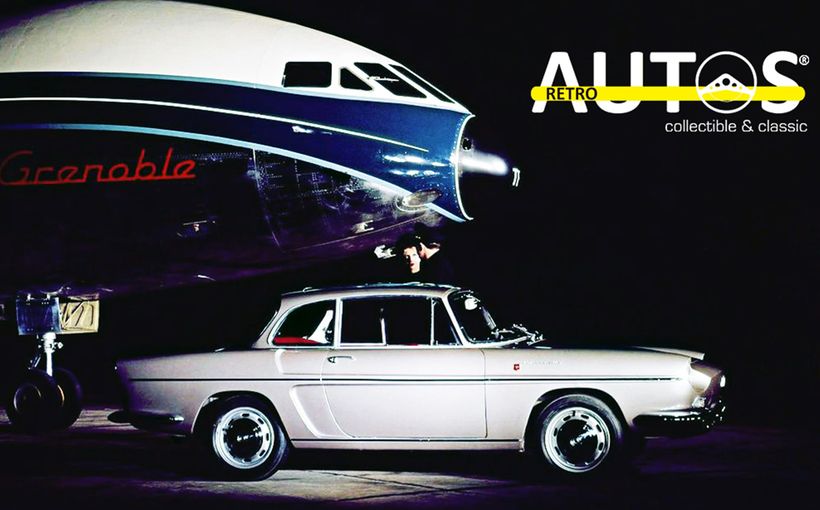Fiat 850 Sport Coupe: Bathurst on borrowed tyres, a sandwich, a Coke and 8000 rpm!

Garry Leggatt in his Fiat 850 Sport Coupe pushing hard through the Esses at Sydney’s Warwick Farm Raceway in 1971. The front wheel angles show a touch of understeer, with the well-designed semi-trailing arm rear suspension keeping the rear tyres flat to the road and the tail nicely behaved. The little Italian coupe was a fine handler, particularly for a rear-engined car.
Finishing last at Bathurst would not normally rank as a memorable achievement in a racing driver’s career. However, if you were driving solo for more than six hours in your first Hardie-Ferodo 500, in the smallest-engined car in the field and with a wafer-thin budget, it would be worthy of a major celebration.
Garry Leggatt achieved just that back in 1972, when he drove his three-year-old Fiat 850 Sport Coupe to finish 10th in Class A and 35th outright – the last official survivor of a hellishly tough race which devoured almost half of the 60-car field.
At the front of those weary survivors was a young Peter Brock in his HDT Torana GTR XU-1. It was the first of Brocky’s record nine Bathurst wins, after a brilliant drive that proved the young charger had really come of age after a four-year racing ‘apprenticeship’ under team boss Harry Firth.
There could not have been a greater contrast between the achievements of Brock and Leggatt that day. However, for the cash-strapped Sydney privateer, having reached the finish line after 101 laps (Brock did 130) and overcome several obstacles just to make it onto the starting grid, the sense of satisfaction was just as great.

A star is born. Peter Brock was only in his 20s when he won his first Bathurst 500 in 1972 – the same year that Garry Leggatt made his Bathurst debut. Leggatt was impressed by Brock’s sportsmanship and the courtesy he showed drivers of slower cars that kept out of his way.
For a Bathurst rookie, Class A was a good place to start as it catered for the smallest and cheapest cars on the grid. However, in 1972 Leggatt found himself in the middle of an all-out war between two burgeoning Japanese giants - Datsun and Mazda. With multi-car entries of Datsun 1200 and Mazda 1300 sedans, Leggatt’s lone Fiat was the only other starter in Class A.
The little Italian coupe, with its rear-mounted 903cc four cylinder engine, may have been outgunned by the Japanese cars in cubic capacity, but excellent handling, braking and a kerb weight of just over 700 kgs made the most of its spirited 52 bhp (39kW). With transverse-leaf/wishbone front suspension and a coil sprung semi-trailing arm rear, the Fiat was remarkably well balanced for a rear-engined car.
It also boasted powerful front disc brakes and with its slick shifting four-speed gearbox had an impressive claimed top speed of just over 90 mph (144 km/h). At those velocities, magazine testers of the era said the tacho needle would happily swing to 7000 rpm and the engine would take 7500 rpm without strain. However, Garry Leggatt would discover to his delight at Bathurst that the top speeds and rpm figures quoted by the car mags were conservative.
“I bought it new in 1969 as my daily driver, but on weekends I did some Series Production races at tracks like Oran Park and Warwick Farm,” Leggatt told Shannons Club. “I was thinking about running it at Bathurst in 1972, which was when they introduced (for only one year) a cost price formula (Cost Price Units or CPUs) which multiplied a car’s retail price by its engine capacity.

Another shot of Leggatt learning his craft at Warwick Farm in 1971. He has happy memories of his Fiat racing days. The little car’s big-hearted performance and durability in competition - without any special preparation - made it a delight to own.
“My competition was the Mazda 1300, Datsun 1200 and cars like that, but because the Fiat had such a small engine it just squeezed in under the cost price limits for Class A. The ARDC said that was fine, but as I’d never raced at Bathurst they also said they could not accept my entry until I’d done that.
“So we decided to compete at the Easter meeting that year which was hosting a round of the 1972 ATCC (renowned for a legendary duel between Pete Geoghegan’s XY Super Falcon and Allan Moffat’s Trans-Am Mustang). It was a 13-lap race and on lap six or seven I was coming down Conrod Straight where I got a good lesson on the speed differences between large and small cars at Bathurst.
“I looked up in the mirror and thought ‘wow, here they come’. It was Geoghegan leading with Moffat right on his tail. I was as far over to the left as I could go and they passed me at the second hump. I was doing about 100 mph (160 km/h) and they flashed past me at something like 170 mph (270 km/h). The speed differential was amazing and both cars lifted right off the road as they went over the hump – like their tyres were about six inches (150mm) off the deck!
“I was stunned by that and knew I’d probably just witnessed something I would never see again. Anyway, we kept our noses clean, didn’t get into any trouble and consequently got our entry accepted for the big race in October.”

The Fiat 850 family’s Bathurst heritage stretches back to the 1965 Armstrong 500, when three examples of the rear-engined sedan (an early derivative of the coupe) were entered in Class A. Here the Rolls Motors entry driven by Trevor Meehan and Pat Holmes rounds Hell Corner as it begins another long climb up the Mountain. As expected, the little Italian cars were no match for the class-winning Ford Cortina 220s that finished 1-2-3-4
1972 Hardie-Ferodo 500: Practice and Qualifying
“We borrowed a car trailer so that we looked a bit more professional,” Leggatt recalled. “There was a guy named Tony Brancallian (sorry if spelling is wrong) who had a business called Formula One Europa Garage in Neutral Bay in Sydney. At the time my wife and I were living in an apartment nearby, so we got to know him a bit and he said if we were going to do Bathurst, he’d give us a hand.”
Leggatt’s Fiat 850 Sport Coupe was three years old with about 25,000 road and race miles (40,000 kms) on the clock. In that time he’d hardly put a spanner on it apart from regular servicing. For the big race he didn’t do any of the detailed preparation popular at the time (blueprinting, balancing etc) simply because he couldn’t afford it, so it raced in stock standard road trim.
He did, however, invest in a set of Koni adjustable shocks for the rear suspension, with a heap of rebound dialled in to minimise camber change (and therefore loss of traction) on the rear wheels during heavy braking and cornering. He also made sure he had the best wheels and tyres allowed.
“Fiats were homologated for (FIA) Group One racing with a 5.0 x 13-inch factory mag wheel, so I asked Tony to get some sent out from Italy because he had a few contacts over there,” Leggatt said. “He managed to get hold of a set and Dunlop had a nice little slick tyre for them, so that was the best we could ask for.

The Fiat 850 sedans returned to Mount Panorama in 1966 and scored their best result, with the Trevor Meehan/Ian Hindmarsh entry finishing fifth in Class A against superior Datsun 1300 and Cortina 220 opponents. Note the tiny 12-inch diameter wheels, which grew to 13s on the sleeker coupe version. The vertical white stripe on the side showed the pit crew where to place the jack if they needed to change tyres.
“1972 was the last year you were allowed to drive the whole race solo, so on Saturday afternoon (after practice) we started thinking ‘geez, this race goes for six hours non-stop, what if I need to have a pee?' So we went into town, bought a length of clear plastic tubing and a funnel, drilled a hole in the driver’s floor to poke the tubing through and tucked the funnel end up under the seat within easy reach.
“The theory was that I could pee into the funnel and it would just flow down the plastic hose and out the back of the car. We figured it took at least 20 seconds to drive up Mountain Straight, which would have given me enough time to do that. Fortunately, I didn’t need to use it.”
Given the cut-throat intensity of the Datsun vs Mazda clash, Leggatt did an excellent job in qualifying seventh fastest out of the 14 cars in Class A. Worthy of note was that his fastest time was only 0.3 sec slower than the mercurial ‘Wild’ Bill Evans and identical to that of multiple AGP winner Doug Whiteford, who were both driving works-prepared Datsun 1200s.

In 1967 the first Fiat 850 Coupe to compete in the Bathurst 500 finished 14th in Class C, driven by David Bye and Lyn Brown. With only 47 bhp from its tiny 843cc engine (Leggatt's later 'Sport' model had four headlights and 903cc), the little Italian fastback was no threat to the more powerful Fiat 124 sedans and class-winning S-type Mini Coopers, at a time when classes were determined by retail price rather than engine capacity. Love the racing mirror on the front mudguard.
“We did alright getting seventh fastest; it was dry and we had those beaut Dunlop slicks on the car,” Leggatt said. “Keep in mind the Fiat had 5.0-inch wide rims where I think the Datsuns only had 4.0-inch rims, so we had a bit more rubber on the road and that was a big help.
“It was reaching just over 100 mph (160 km/h) down Conrod and revving its heart out. It was hitting 8000 rpm in top towards the end of the straight and I was thinking ‘this is not going to last, it’s going to blow up’.
“I asked someone, I think it was Brian Foley, if I should continue to hold it flat all the way down the straight or ease off a bit and he said ‘no, just hold it flat, because if you ease off you’ll lean out the mixture and probably damage the engine.’ So that’s what I did and it never missed a beat the whole weekend. Incredible really, given that it was just the standard engine as it came from the showroom. I’d never had the head off it or anything.”

Those were the days. In the 1960s the Bathurst 500 attracted a staggering variety of makes and models competing across a number of classes each year. Here the Bye/Brown Fiat 850 Coupe leads the Taylor/Smith HD Holden X2 and Daly/Murray Fiat 124 sedan through Murray’s Corner during the 1967 race. All three cars finished.
Race Day
When Leggatt and his small crew went out for dinner on race eve, it started to rain. By race morning it was bucketing down, which meant it would be the first wet start for the annual 500-mile race.
However, because Leggatt was doing it on the tightest of budgets he didn’t have any wet weather tyres. By 7am, only two hours prior to the start, there were a lot of ideas being thrown around as necessity became the mother of invention.
“Our first thought was to pinch the tyres off the car trailer because they were also 13-inch diameter,” Leggatt revealed. “The only problem was they were re-treads and you weren’t allowed to race on re-treaded tyres.
“So then we thought about taking our slicks up to the Dunlop tent and getting them to hand-cut some (tread) grooves into them with their special tools, but the Dunlop guys were flat-out supplying other teams before the race so that wasn’t an option either.

Garry Leggatt neatly clips the apex as he powers through Murray’s Corner during practice for the 1972 Hardie-Ferodo 500. Note the exotic 5.0 x 13-inch alloy wheels he had shipped in from Italy, which were fitted with grippy Dunlop racing slicks. This ‘fat’ wheel and tyre combo put more rubber on the road than his Japanese rivals and helped to secure an excellent qualifying time – on a dry track.
“With time ticking away, we were having a chat with one of the guys from the Fiat Car Club because Fiats had a pretty good following back then and there were always lots of enthusiastic car club guys hanging around.
“Anyway this guy says, ‘look, I’ve just put a brand new set of tyres on my road car…take those!’ So we jacked up his car (Garry can’t remember which model), removed the four (steel) wheels and fitted them to my Fiat. That got us onto the grid and away we went. The only problem was those tyres with their taller sidewalls made the gearing much taller. They were probably about two to three inches larger in diameter than our Dunlop slicks, so she was pretty slow up the hill.
“The rain in the early laps was horrendous. I remember going down Conrod Straight on the first lap following a guy in a Ford Escort and all I could see was a massive ball of spray and his tiny set of tail lights.
“I remember thinking as we went past the drive-in ‘gee, if this guy crashes I reckon I’m going to be right behind him and there’ll be a massive prang because I can’t see a damn thing’ but then gradually as the field spread out the spray started to fall away and we could actually see where we were going.”

In 1972 the first wet start at Bathurst caused panic for many competitors on tight budgets, including Garry Leggatt who did not have any wet weather rubber. Borrowing a set of wheels and tyres from a generous Fiat road car owner was the only option. Note how big they look compared to the low profile racing slicks in the previous photo. They didn’t help the car’s gearing, but at least they kept it on the road. Note also the megaphone-style exhaust outlet, after long-standing rules demanding the use of standard exhaust systems were relaxed in the final year of Series Production racing.
Although he couldn’t match the times of the fastest Mazdas and Datsuns, Leggatt’s Fiat ran without a hitch through the treacherous opening stint of the race before making his first scheduled stop for fuel.
To minimise the effect of the taller gearing, Leggatt’s crew had disconnected the alternator (ie pulled out the side plug) based on a simple theory that if the alternator wasn’t charging, the engine could produce a bit more power. They left it disconnected for the first two stints, without any battery problems.
When his second stop was approaching in the early afternoon, Leggatt’s crew hung out a sign (long before today’s radio communications) asking if he wanted to change to the Dunlop slicks, as the rain had moved on and the track was drying out.
Leggatt’s immediate thought was that they must have succeeded in their pre-race plan to get some light grooves cut into the face of the slicks, as there were still a few shallow streams of water draining across the track at various points. He gave a nod of approval, but when he pitted for the changeover he noticed with some concern that the slicks had not been grooved.

This wonderful shot from Bathurst 1972 shows Leggatt keeping well off the racing line to allow Doug Chivas (who finished third outright) to sweep past in his R/T E49 Charger on the approach to The Cutting. Leggatt spent the whole race scanning his mirrors to ensure he didn’t get in anyone’s way. Note the Fiat’s Dunlop slicks were fitted by this stage of the race, as the track was mostly dry by then.
“They put the slicks on and I remember sitting there thinking how long it was taking,” Leggatt said. “Keep in mind we still had to use the old manual jacks in those days and Fiats didn’t have the usual wheel studs sticking out from the hubs. The wheels were held on by bolts, so you had to line up the wheel holes with the bolt holes in the hub, which was always difficult to do in a hurry.
“So away I went on the slicks and the car was so much better to drive with the lower gearing and better grip. The track was mostly dry by then, except at places like Reid Park where there was always water running right across the track which you couldn’t avoid. I just had to drive across that stream each lap and allow for a bit of a slide until the tyres gripped again.
“I never got out of the car the whole race. At that second stop my wife handed me a sandwich and a can of Coke with a straw sticking out of it, so going up Mountain Straight I quickly ate the sandwich and took a few sips of the Coke. As I was approaching the end of the straight I moved over to the right, flung the can of Coke out the window into the bush and then moved back on to the racing line. That was all I ate and drank the whole day.”
Leggatt may have been classified as the last official finisher, but he was far from disgraced. His car ran faultlessly and his 10th place in Class A bettered the performance of several big names including Roger Bonhomme and Doug Whiteford who retired with mechanical problems. Plus provisional Class A winner Geoff Perry, who was later disqualified because of engine 'irregularities' in his Mazda 1300 that were not within factory tolerances.

Fresh from their Bathurst debut in October, Leggatt and the Fiat were back on track as soon as November 1972 at Warwick Farm. Note the car is still displaying its Bathurst signage, with only the race number being changed for this meeting. There was no stopping this car – the harder and longer he drove it, the better it performed.
Decades later, Leggatt’s memories of his first Bathurst 500 remain vivid. He got to see a fascinating race unfold from one of the best seats in the house. And given his little Fiat coupe was powered by the smallest engine in the field, he was also able to appreciate first-hand the unique challenges faced by small car drivers at Bathurst.
“Going up the mountain, you’d spend the whole day looking in your mirrors to make sure you stayed out of everyone’s way. I remember each time I was exiting (GTX) corner at the end of Mountain Straight I’d look over my right shoulder down the straight to see who was coming along behind me, because some would catch up with you pretty quickly and you had to allow for that.
“I’ll never forget Brocky in that race, which was his first win of course. He must have passed me about 30 times, but each time I always made room for him and each time he always gave me a little wave to say thanks. I’ll never forget that.
“The Fiat was pretty slow climbing up the hill, but very quick on the way down. Going down through The Esses and The Dipper it was faster than a lot of the bigger cars and you could really make up some time through those twisty bits.

The Fiat 850 Coupe proved its versatility by also taking part in major rally events. The Burns/Kayo car, backed by Sydney’s Grenville Motors, competed in the gruelling 1967 Southern Cross Rally. We assume this one was stock-as-a-rock, judging by the shiny chrome hubcaps and what appear to be standard road tyres.
“The brakes were brilliant all day and you could brake really late. On Conrod you’d see some of the big cars approaching in the mirror and they’d thunder past you just before the second hump, but then they’d start braking because they took forever to slow down. So you’d go sailing right past them into Murray’s and it would often take them until half-way up Mountain Straight to overtake you again.”
Leggatt retains cherished memories of his first Bathurst drive and the Fiat 850 Sport Coupe that made it all possible. He would go on to race many times at Mount Panorama throughout the 1970s and early 1980s, in a variety of cars and classes, but the Fiat will always hold a special place in his heart.
“I bought that car on January 28, 1969 and my wife and I got married on January 28, 1972,” Leggatt said with a chuckle. “She always says I never remember our wedding anniversary on that date - only the Fiat!” That’s real car passion for you.
Protect your Fiat. Call Shannons Insurance on 13 46 46 to get a quote today.









